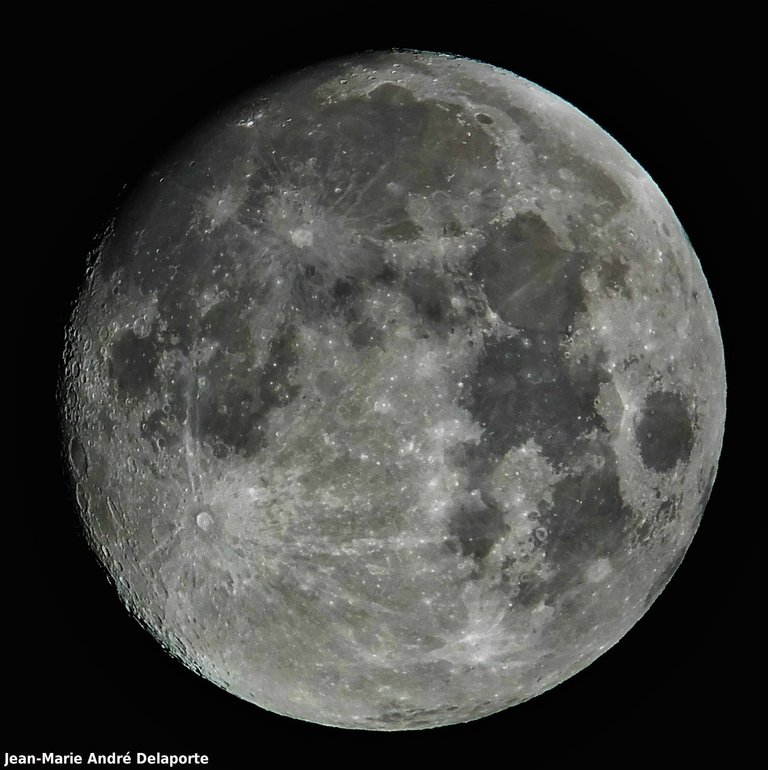
Image above is last night’s moon – May 8, 2017 – via Jean Marie André Delaporte in Normandy, France. He caught this photo with his smartphone at the eyepiece of a 12-inch Dobsonian telescope.
Tonight – May 9, 2017 – the moon might look full to your eye as it beams in the east at dusk and travels across the sky nearly all night long. Strictly speaking, though, it’s a waxing gibbous moon (not a full moon) that lights up the nighttime from dusk May 9 until dawn May 10. The moon will reach the crest of its full phase tomorrow, May 10, at 21:42 UTC; translate to your time zone.
The moon is full at the instant that it’s opposite – or 180o – from the sun in Earth’s sky. In other words, at full moon, the sun, Earth and moon are more or less on a line in space, with Earth in the middle. That’s why the moon at the vicinity of full moon rises in the east around sunset, climbs highest up in the sky around midnight and sets in the west around sunrise.
In the jargon of astronomers, the moon is astronomically full when it is precisely 180o from the sun in ecliptic longitude (also called celestial longitude). The ecliptic, often drawn in on star charts, depicts the sun’s annual path in front of the constellations of the zodiac.
Whenever the moon turns full, the full moon assumes the sun’s position in front of the zodiac for one-half year or six months hence.
So, for example, as the moon turns precisely full on May 10, the sun will be shining in front of the constellation Aries the Ram. But the moon will be shining in front of the constellation Libra the Scales – where the sun will reside some six months from now.
Hi! I am a robot. I just upvoted you! I found similar content that readers might be interested in:
https://longroom.com/discussion/471362/almost-full-moon-on-may-9
thanks for sharing